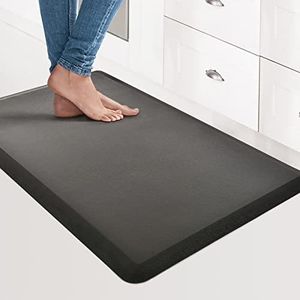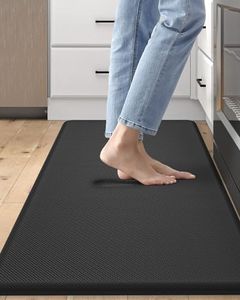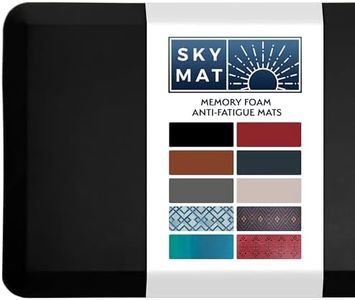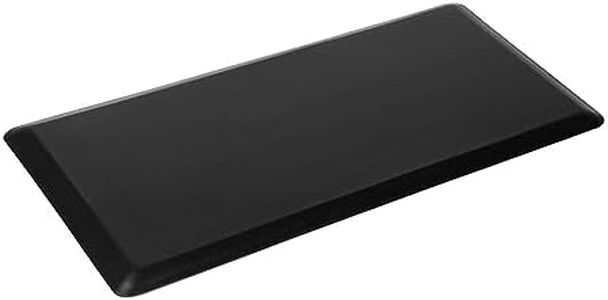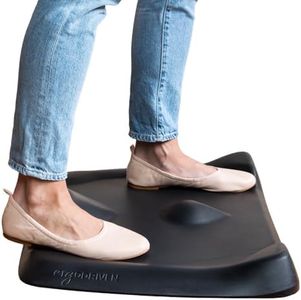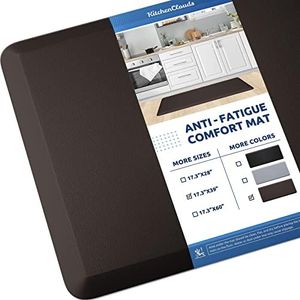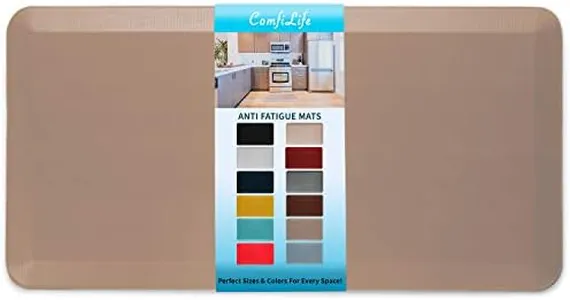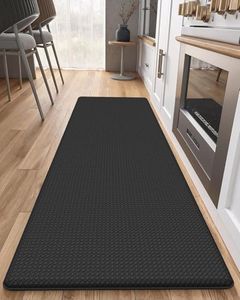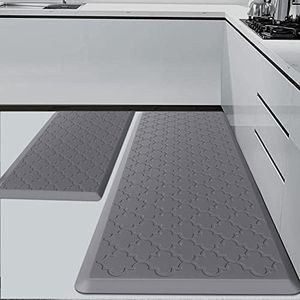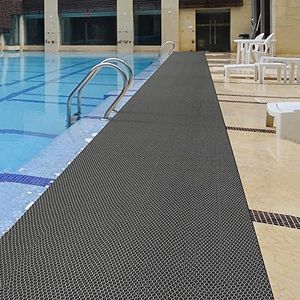We Use CookiesWe use cookies to enhance the security, performance,
functionality and for analytical and promotional activities. By continuing to browse this site you
are agreeing to our privacy policy
10 Best Anti Fatigue Mats
From leading brands and best sellers available on the web.Buying Guide for the Best Anti Fatigue Mats
Choosing the right anti-fatigue mat is all about supporting your comfort and well-being, especially if you spend long hours standing at work or at home. The right mat eases pressure on your feet, legs, and back, helping to reduce fatigue and discomfort. When shopping, it's important to understand the features that make a mat effective and match them to your specific needs, whether for a kitchen, workspace, or industrial setting. Focus on the specs that matter most to your routine and environment for the best result.ThicknessThickness refers to how deep or cushioned a mat is, which determines how much support it provides. Thicker mats generally offer more cushioning, which can ease stress on your body. Mats typically range from about half an inch to over an inch thick. For those standing for long periods or in one place, a mat between 3/4 inch and 1 inch is often most comfortable. Thinner mats might be fine for occasional use or where tripping hazards are a concern. Your comfort level, how long you stand, and your work environment should guide your choice: heavier use usually calls for more thickness.
MaterialThe material affects durability, comfort, and ease of cleaning. Common materials include foam, gel, rubber, or a combination. Foam mats are typically the softest and lightest, best for light use. Gel mats offer a balance between support and softness, often selected for places like kitchens. Rubber mats are very durable and provide firm support, suited for industrial or high-traffic areas. Choose a material that matches your environment and comfort preferences—softer for fatigue relief, sturdier for durability.
Surface TextureSurface texture refers to the finish on the top of the mat, affecting safety and feel underfoot. Textured surfaces help prevent slipping, which is especially important in wet or busy areas. Smooth mats may be more comfortable with bare feet or socks but might not provide as much grip. Decide if traction or a smoother feel is more important based on where the mat will be used and your personal safety concerns.
Size and ShapeThe mat’s size and shape impact how well it fits your workspace and how much area it covers. Mats come in various shapes—rectangular, contoured, or even custom sizes. A larger mat covers more area, letting you move around, while a smaller mat may work better in compact spaces. Think about the amount of movement you do and measure your space to find a size and shape that offers full support without getting in the way.
Edge DesignThe edges of the mat, whether they're beveled or straight, influence both safety and durability. Beveled edges slope down to the floor, helping prevent trips and making it easier to step on and off the mat. This is especially useful in areas with lots of foot traffic or if you’ll be using a rolling chair. If tripping is a concern or you have mobility issues, opt for mats with clearly beveled edges.
Ease of CleaningEase of cleaning refers to how simple it is to keep the mat sanitary and free from debris. Some mats can be simply wiped down, while others may require a more thorough cleaning or are even water-resistant for washing. Choose a mat that matches the level of mess in your environment; kitchens and workshops might need mats that resist stains and clean up quickly.



